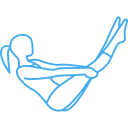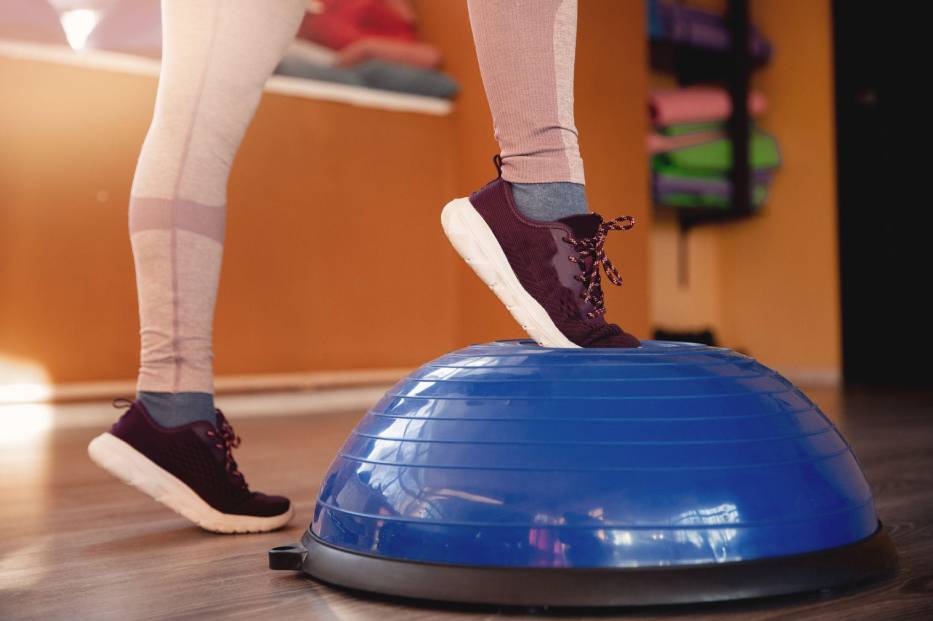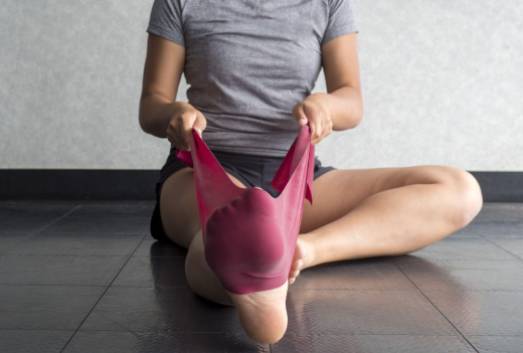Here is a list of the common injuries and conditions we treat. We are adding content for each injury over time and you can see our blog page for information on how we treat other conditions. Feel free to reach out if you have any questions, prior to booking your assessment.
- Running – Biomechanical faults and Pain
- Achilles Strains and Ruptures
- Ankle Sprain rehabilitation
- Plantar Fasciitis and Foot Strengthening
- Hip Pain
- Lower Back Pain
- Neck Pain
- Whiplash
- Nerves Injuries – Sciatica
- Nerve Injuries – Pinched Nerves
- Shoulder – instability- dislocation
- Shoulder – Rotator Cuff Tears
- Elbow -Tennis Elbow
- Thumb – De-Quervains

Ankle sprains are a common injury and not exclusive to the sports population. If this injury is not treated, it can prolong the recovery time and, in some cases, result in chronic ankle instability. Most ankle sprains occur with an inversion sprain. This occurs when the lateral ligaments on the outside of the ankle are sprained. In some cases of more severe injury, the internal and medial ligaments can be sprained.
Physiotherapy and pilates exercises for ankle sprains are an ideal combination. Physiotherapy is necessary to diagnose and treat the ankle sprain, adjusted based on the degree of sprain and injury healing times. Pilates equipment is ideal for ankle rehabilitation, as it was designed for the foot and lower extremity. This allows gradual strengthening where there is weakness and pain.

What is an Ankle Sprain?
An ankle sprain involves is a tear to the ligaments of varying severity. Ligaments are not designed to stretch, as their function is to stabilize joints. There is a grading mechanism which helps to classify the degree of ligament damage. Grade one is a mild sprain where microscopic fibres are torn; grade two involves larger tears, but the ligament is intact; grade three is a complete tear.
Even mild sprains should be rehabilitated properly due to high degree of recurrence of ankle sprains. In fact, one of the risk factors for an ankle sprain is a previous ankle injury.
Ruling Out a Fractures
One of the first things to rule out after a sprain is a fracture. There is a well-known test, used both in emergency rooms and physiotherapy clinics, referred to as the Ottawa Ankle Rules. This provides us with a set of criteria to determine whether there is a possible fracture. Diagnosis is based on where your pain is and whether you can immediately put weight on the foot. If you cannot put weight on it, it would be advisable to go to an emergency room and get an X-ray.

Physiotherapy and Pilates Treatment for a Mild Ankle Sprain
Mild sprains can recover more quickly with a range of motion and gradual strengthening exercises. The pilates reformer and chair are great for strengthening the lower leg. There are also lots of balance and motor control exercises available; these can be performed using balance boards, Bosu, and standing work. Mild sprains can tolerate earlier strengthening and a return to sports. It may be advisable to wear an ankle brace in order to return to your chosen sport. This is only necessary until full strength and stability have been achieved.
Treatment Timeframe and Exercises for Moderate-to-Severe Ankle Sprains
Moderate to severe ankle sprains require a much more gradual approach, based on the timeline of ligament healing. Below is a brief summary of what this could look like. The timeline and exercises are based on pain and the extent of the injury.
Zero to Three Days
Protect and rest. Ice, elevation and compression are all simple things to do at home. Use crutches to control weight bearing, depending on the pain intensity. Some studies have shown that using an air cast ankle brace can be significantly better than just elastic support or taping. There are numerous types of braces that are not designed like a boot. Less-cumbersome braces still provide the stability and protection needed in this phase.
Four to 10 Days
At this stage, you need to work on your range of motion, active movements, and light strengthening, but still in a pain-free manner. It is important to protect the ligaments and continue to use crutches when walking. Use crutches until walking is pain-free.
A brace is effective at providing stability and allowing the ligament to stay protected. One study found that using an air cast ankle brace produced significant improvement in ankle joint function when compared to an elastic support bandage.
11 to 21 Days (Early Remodelling)
At this stage, you can work on all the components of the rehabilitation program. These include strength and function, balance, stability, and adding resistance. Manual therapy for the ankle joint is useful where the joint has become stiff. At Pilates4Physio, we use a combination of exercise bands, resistance springs, and body weight. The pilates reformer and chair are ideal for lower leg and ankle rehabilitation.
Late Remodelling and Maturation
This stage introduces advanced strengthening, motor control, and stability. Exercises become more functional or sports-specific to facilitate a return to normal activities. Exercises will incorporate agility, sports drills, coordination, higher level balancing and jumps along with increased strength and endurance.
Return to Activities
There are various tests we can perform to see if you are ready for a full return to certain sports or activities. These include strength and stability tests, such as single leg presses, single leg hops, balance tests, and heel raise tests for strength and endurance.
Avoiding Chronic Ankle Instability
Following an ankle rehabilitation program from early on is the best protection against developing chronic ankle instability. If the ligaments have healed, then instability can arise from poor motor control, muscle weakness, poor balance or joint dysfunction. An exercise program can address all of these deficits. If the ligaments have not healed properly, then a referral to an orthopaedic surgeon is necessary for further assessment.
Pilates for Ankle Injuries
The pilates equipment and exercises are ideal for ankle injuries. This is because many exercises focus on the hip, knee, and foot in a functional manner. The reformer and pilates chair are designed for foot and lower leg strengthening. The reformer has a mini trampoline and board for jumping exercises. These components are ideal for jumping or running on a harder surface with your full body weight.
If you have any questions about how physiotherapy or pilates may help your ankle injury, you can email us at info@pilates4physio.ca or call 647-499-6685. Book your appointment with us today!
